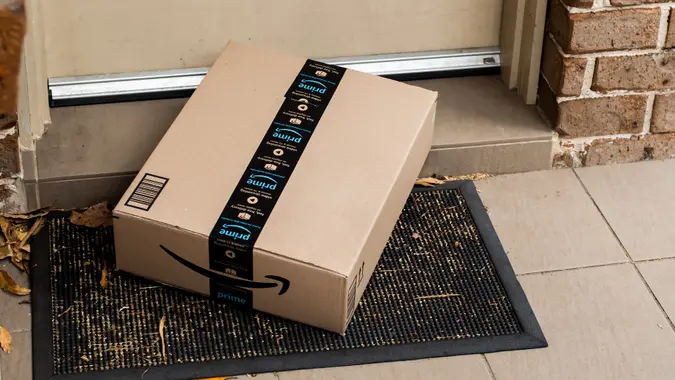Top 3 Reasons Japanese Cars Offer Lower Maintenance Costs
Commitment to Our Readers
GOBankingRates' editorial team is committed to bringing you unbiased reviews and information. We use data-driven methodologies to evaluate financial products and services - our reviews and ratings are not influenced by advertisers. You can read more about our editorial guidelines and our products and services review methodology.

20 Years
Helping You Live Richer

Reviewed
by Experts

Trusted by
Millions of Readers
Its no secret: Japanese vehicles have a long-standing reputation for reliability and budget-friendly maintenance, often topping the charts provided by automotive news outlets and magazines in these metrics.
Below we discuss the factors behind these rankings and how exactly buying a new Japanese car, SUV or truck can benefit your pocketbook.
Fewer Problems Overall
According to a TopSpeed analysis built upon Repair Pal data, Acura and Honda top the list of cars which offer the fewest problems, although Toyota took second place in terms of cheapest car make to maintain. The eight automakers cited as having a reliability rating of at least four out of five included six Japanese entries, with the full list as follows:
- Acura
- Honda
- Kia
- Hyundai
- Mazda
- Lexus
- Toyota
- Nissan
TopSpeed’s Thomas Gillett said after World War II, Japanese manufacturers focused on producing vehicles for the mass market. With only modest financial resources available at the outset, they prioritized cost-effectiveness and operational efficiency.
Gillett added that over the past eight decades, advancements in producing affordable vehicles — especially from the 1970s through the 2000s — have firmly established their role in the automotive industry, turning large-scale, efficient manufacturing into a refined craft.
Proven Technologies
Writing for import and sales enterprise TokyoDrive, Sohaib Muhammad made a concise case for two different reasons why Japanese autos might take the edge when it comes to reduced operational costs.
The first? The fact that Japanese brands were more likely to slowly roll out technological gimmicks and untested advancements, instead relying more heavily on an iterative process which prioritized proven technology. In the end, this creates a more reliable parts ecosystem and ultimately reduces the likelihood of a stiff repair bill.
Readily Available Parts
Secondly, speaking of parts: Given the widespread popularity of Japanese vehicles worldwide, replacement parts are often at-hand and provided at a variety of price points. The overall cost of the parts, service technician familiarity with the install and the reduction of downtime associated with repairs are all pluses in the column for those who drive Japanese cars.
Caveat: Tesla Maintenance Costs Are Very Low, Comparatively
There’s one notable caveat, however, bucking the trend.
As The Car Guide indicated, Tesla edged out the competition when it comes to lower maintenance costs, largely due to their electrical vehicle (EV) composition, pegged at an average of $5,867 over 10 years.
Toyota wasn’t far behind, however, at $5,996, with Lexus ($7,786), Mitsubishi ($7,787), Honda ($7,827), Mazda ($8,035) and Nissan ($8,088) rounding out the pack — all Japanese brands.
The most expensive vehicles to maintain came from Stellantis plants. Ram ($16,802), Jeep ($11,476), Chrysler ($11,304) and Dodge ($11,079) all topped the charts in this regard.
More From GOBankingRates
 Written by
Written by  Edited by
Edited by 



























